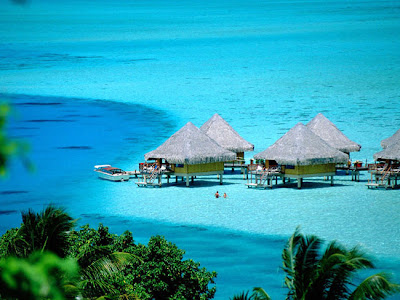VARADERO HOTELS INFO
Varadero is the most important tourist resort in all of Cuba, boasting more than 19 km of gorgeous white sand beaches. The first foreign tourists visited Varadero in the early 1870s, and for many years Varadero was considered one of America's Best resorts. In 1910 Varadero hosted the famous annual rowing regatta. Five years later the first hotel, called Hotel Varadero and later Hotel Club Nautico, was built. Tourism in Varadero grew rapidly in the early 1920s & 30's as Irénée du Pont Nemours, the aristocratic American millionaire, built his estate on the peninsula. Soon after many famous and also infamous movie stars, Industrial magnates & gangsters vacationed & built their personal summer mansions in Varadero, for example the legendary American gangster Al Capone.
After Fidel Castro's Cuban Revolution in 1959, many of these beautiful mansions were expropriated from their rich owners. As a symbol of the new integrated tourism for Cubans and foreign visitors of all social classes, the Park of the 8000 Cubicles (Parque de las 8000 Taquillas) was built in 1960. Visitors could actually leave their personal belongings safety in the basement of the park and had access to sanitary installations and a variety of food services on the first floor. They could rent bathing articles and swimsuits and go swimming in Varadero's incredible clear warm Caribbean waters. The surroundings of this area soon became the center of Varadero Beach. Between the 1960s and 1980s under the Cuban Governmental Artistic programs Varadero transformed itself into the Cuban Tourism cultural centre. During those years the central park (8000 Taquillas) (located between 44th and 46th Street) saw countless concerts, festivals and sporting events that attracted artists from around the world.
CUBAN ARTIST GALLERIES
VACATION IN VARADERO
The 1990s brought the start of another hotel building campaign, mostly in the 4-star and 5-star segment. Many of the hotels are operated or co-owned by foreign businesses like Melia, Barcelo, TRYP, etc. (France's Club Med used to have a property but has since left Varadero.) As international tourism was opened up, the local population expanded with the arrival of people, some in key economic positions, from other parts of Cuba. As a consequence, Varadero has lost much of its social and cultural life and its traditions. The central park, the cinema and various cultural meeting places were neglected in favor of a hotel-centred all-inclusive-tourism and finally closed. The International Carnival, an initiative of Cubans and foreigners started in the 1980s, also ceased.
In addition to its most valued resource, the beach, Varadero has natural attractions such as caves and a chain of easily accessed virgin cays. There are also cultural, historical and environmental attractions in the vicinity, such as the cities of Matanzas and Cárdenas, the Zapata Peninsula and the resort of San Miguel de los Baños. Varadero, which is a free port, also possesses facilities for scuba diving, deep-sea fishing, yachting and other water sports.
Varadero receives about 3.5 million visitors per year.
Varadero is primarily visited by European, Latin American and Canadian tourists. The number of U.S. tourists visiting Varadero is increasing.
VARADERO TRAVEL TIPS
 Floating Hotels in Varadero Cuba
Floating Hotels in Varadero Cuba

 Hotel Pool in Varadero Cuba
Hotel Pool in Varadero Cuba Water Sports on Varadero Beach in Cuba
Water Sports on Varadero Beach in Cuba
 VARADERO CUBA
VARADERO CUBA